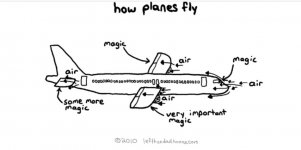~~~~~~~~~
the 'propagation rate' of a Brown's gas flame, if the gas is 'ignited' (it is actually an electrical function in the case of browns gas, it is an IMPLOSION)..is mach +25, or over 8900m a second. The flame, is on record, when applied to different materials... it is on record as transmutating elements. independent correlation.....
Yet, it is just an audio cable, isn't it?
Brown's gas, transmutation of elements, fart on. you really need to do better than this BS that has floated around the internet for years. It's all a crappers delight of nonsense.
Brown's gas, transmutation of elements, fart on. you really need to do better than this BS that has floated around the internet for years. It's all a crappers delight of nonsense.
Scott,
Brown's gas is real, has been used for centuries. It is just hydrogen and oxygen. A common item in the old days of steel mills.
Now as to transmutation of elements, I know some brokers who can turn gold into ... their pockets!
ES
Frustration, I should just learn to ignore this stuff sorry.Scott, why be rude?
Frustration, I should just learn to ignore this stuff sorry.
Think of it as performance art.
It would be as wrong to love your enemies as to hate your friends. Nevertheless, '' the way of life is wonderful ; it is by renunciation." Especially when prodding is no longer necessary...
Oliver Heaviside.
Electromagnetic theory : Heaviside, Oliver, 1850-1925 : Free Download & Streaming : Internet Archive
Electromagnetic theory : Heaviside, Oliver, 1850-1925 : Free Download & Streaming : Internet Archive
Electromagnetic theory : Heaviside, Oliver, 1850-1925 : Free Download & Streaming : Internet Archive
FROM one point of view the present Volume II consists essentially of a detailed development of the mathematical theory of the propagation of plane electromagnetic waves in conducting dielectrics, according to Maxwell's theory, somewhat extended. From another point of view, it is the development of the theory of the propagation of waves along wires. The connection of the two subjects was thoroughly explained in Chapter IV. of Volume I., which should be understood. But on account of the important applications, ranging from Atlantic telegraphy, through ordinary telegraphy and telephony, to Hertzian waves along wires, I have usually preferred to express results in terms of the concrete voltage and current, rather than the specific electric and magnetic forces belonging to a single tube of flux of energy. The translation from one form to the other is quite easy, when understood.
George
links don't work in IE and Chrome
Links now work.
Good luck on your exam !
.
Electromagnetic theory : Heaviside, Oliver, 1850-1925 : Free Download & Streaming : Internet Archive
Electromagnetic theory : Heaviside, Oliver, 1850-1925 : Free Download & Streaming : Internet Archive
Electromagnetic theory : Heaviside, Oliver, 1850-1925 : Free Download & Streaming : Internet Archive
Links now work.
Good luck on your exam !
.
Last edited:
Frustration, I should just learn to ignore this stuff sorry.
Continuing, since the cable is a ionic fluid, it exhibits both longitudinal and transverse wave function.
In one fell swoop, making transmission line geometry issues.... nearly irrelevant. Instead of dealing with the issues that everyone else has and the entire math trip regarding design and execution, I simply walked away from the whole design issue, as it was then irrelevant. Impedance matching became irrelevant.
Theoretically, if I was right, I should have been able to take this speaker cable I made, of a multi-strand nature, and of approximately an aggregate 9 gauge Awg, with a termination mass of 1 gauge awg, and use three of the four speaker cable lines (for a speaker pair)..and transmit HD component video. This, with cables...terminated with spades. And it works.
~~~~~~~~~
As for Browns gas, Scott, go out and get one (a generating device of that type).
Regarding Russell's Teapot, I was curious, so I went and spent the $6k required to get one.... and tested... for myself.
I was astounded. I have bellied up to the bar. I have walked the walk. I have put my money where my mouth is.
You, on the other hand, have not.
As for Browns gas, Scott, go out and get one (a generating device of that type).
Regarding Russell's Teapot, I was curious, so I went and spent the $6k required to get one.... and tested... for myself.
I was astounded. I have bellied up to the bar. I have walked the walk. I have put my money where my mouth is.
You, on the other hand, have not.
I thought we were talking about the one that uses hydrinos and was over unity where the "inconvienient" side effect was the creation of diamonds and other rare earth elements. The testimonials were from several non-existant scientists IIRC. If not, sorry again. I did the KOH and battery thing when I was a kid, fill jars and light it. Unfortunately I wondered what would happen with salt instead and filled my grandmother's basement with clorine gas, run away!
BTW there's a Unicorn in my garden.
Last edited:
.............................................
BTW there's a Unicorn in my garden.
Total hearsay as Unicorns are only seen by "Maidens" - so who told you that fact?
@Thorsten
Keep out of this please.
The bridge used may not be suitable to survive the fault current, depends on the orientation of the silicon die in the case. If the die are planar to the mounting surface, they may fail open and therefore leave the chassis hot to ground. Note: The potting compound is alumina filled epoxy...the alumina is ground powder and detracts from the tensile strength of the epoxy, but generally does not compromise compressive strength (about 17kpsi). If they are 90 degrees to the mounting surface, the aluminum case will most likely contain the force of the explosion so the silicon will melt into a low resistance mass and then clear the breaker. The bridge "fix" must be reliably capable of failing short, and being able to support fault current long enough to clear a 20 amp breaker magnetically.Elliot has this setup on his site where he uses a bridge rectifier connected to safety ground in order to reduce ground loops. That would cause mayhem in this test!@# Still good for sound.
It's needed to assure all metal exposed is bonded to safety ground. Double insulated is also a method.I am not convinced about the advantages of tying signal ground to chasis ground.
Agreed. NEC is very light with respect to grounding, and really considers it just for safety.His remedy in many installations is to have the electricians remove the hot and neutral conductors from the conduit, do as tight a twist of them as feasible, and then reinstall them. He does get a lot of baffled looks
His work is very good, and covers a lot. But it is indeed incomplete.I have had to return equipment that was manufactured with design assistance from Bill Whitlock, it just did not handle the safety ground correctly.
Why do power cords affect the sound of equipment?
Time?? That fourth dimension?Well, it's probably either signal contamination from ground loops or something in the fourth dimension. Depends on who you ask.
All good fortune,
Chris
Seriously, you nailed it. Loops. And coupling..
j
Last edited:
Total hearsay as Unicorns are only seen by "Maidens" - so who told you that fact?
@Thorsten
Keep out of this please.
The Unicorn in the Garden
The cartoon is/was up on youtube.
The Unicorn in the Garden
The cartoon is/was up on youtube.
Thurber - being a source of impeccable authority - can be accepted as the exception which proves the rule.
Had you quoted Myles na Gopaleen as your source I could not have accepted the validity of your claim as he, despite all of the fantastic sightings which he described, never once saw a unicorn!
Thanks.
Brown's gas, transmutation of elements, fart on. you really need to do better than this BS that has floated around the internet for years. It's all a crappers delight of nonsense.
I'm supporting you
His work is very good, and covers a lot. But it is indeed incomplete.
Time?? That fourth dimension?
Seriously, you nailed it. Loops. And coupling..
j
Neil Muncy is the guy I credit with the work. Others have popularized his work but often tilt things or omit things and even get things wrong. I can think of at least three folks who do that.
John,
We really are going to disagree on power cords. An ordinary power cord can have twice or more DC resistance than a ludicrously priced cord. As the current in most linear supplies is compressed to be triple what the power rating would suggest (or more) line resistance can be an issue.
Most folks then go on about how with all the cable from power plant to outlet, how can the cord even count. But as I suspect you know it is not just the source impedance of the power plant. It is the impedance across that provided by all of the loads. The NEC allows a 5% drop to the panel board at full load and another 5% to the outlet. So with a 200 amp panel board a 120 volt line could sag by 6 volts or .06 ohms. (100 amps per side.) For the 20 amp branch circuit that would be .3 ohms worst case. In measurements it is often below .1 ohm. That is why dirty connections and thin cable count for a bit of real improvement in maximum power from an audio power amplifier.
The second issue is that most ludicrously priced power cords include some sort of filtering. The most commonly sold cord (and reasonably priced) wraps the conductors tightly to the ground lead. Others actually build in LC filters.
Now if anyone wishes to try a simple experiment, just take a 24 volt small relay and wire it so that the coil is fed through the Normally Closed contact. This will form a buzzer. Power it from a wall wart. Now place it on the same AC leg as your sound system. Place it in a closet with SY.
When I try this some gear really does not just get worse it actually sounds broken!
Now as to the Fourth Dimension, even they sound better with a good system!
ES
Last edited:
I thought we were talking about the one that uses hydrinos and was over unity where the "inconvienient" side effect was the creation of diamonds and other rare earth elements. The testimonials were from several non-existant scientists IIRC. If not, sorry again. I did the KOH and battery thing when I was a kid, fill jars and light it. Unfortunately I wondered what would happen with salt instead and filled my grandmother's basement with clorine gas, run away!
BTW there's a Unicorn in my garden.
Scott,
Can you point me to some of these sites? Monday is a good day for humor.
BTY folks actually have made unicorns out of horses by adding cells to grow a single horn! (And you though folks here had too much time on their hands!)
John,
We really are going to disagree on power cords.
While you may think we disagree, you've written nothing to support that. Since your argument is unsupported, we clearly agree.
I have not mentioned line sag. What I speak of is entirely independent of that.
Where in code are the 5% numbers you mention. Is it in 2005, 2008, or 2011?
Last I recall, 4% was just a recommendation due to incandescent bulb dimming and what we can see.
j
- Status
- Not open for further replies.
- Home
- Member Areas
- The Lounge
- John Curl's Blowtorch preamplifier part II


